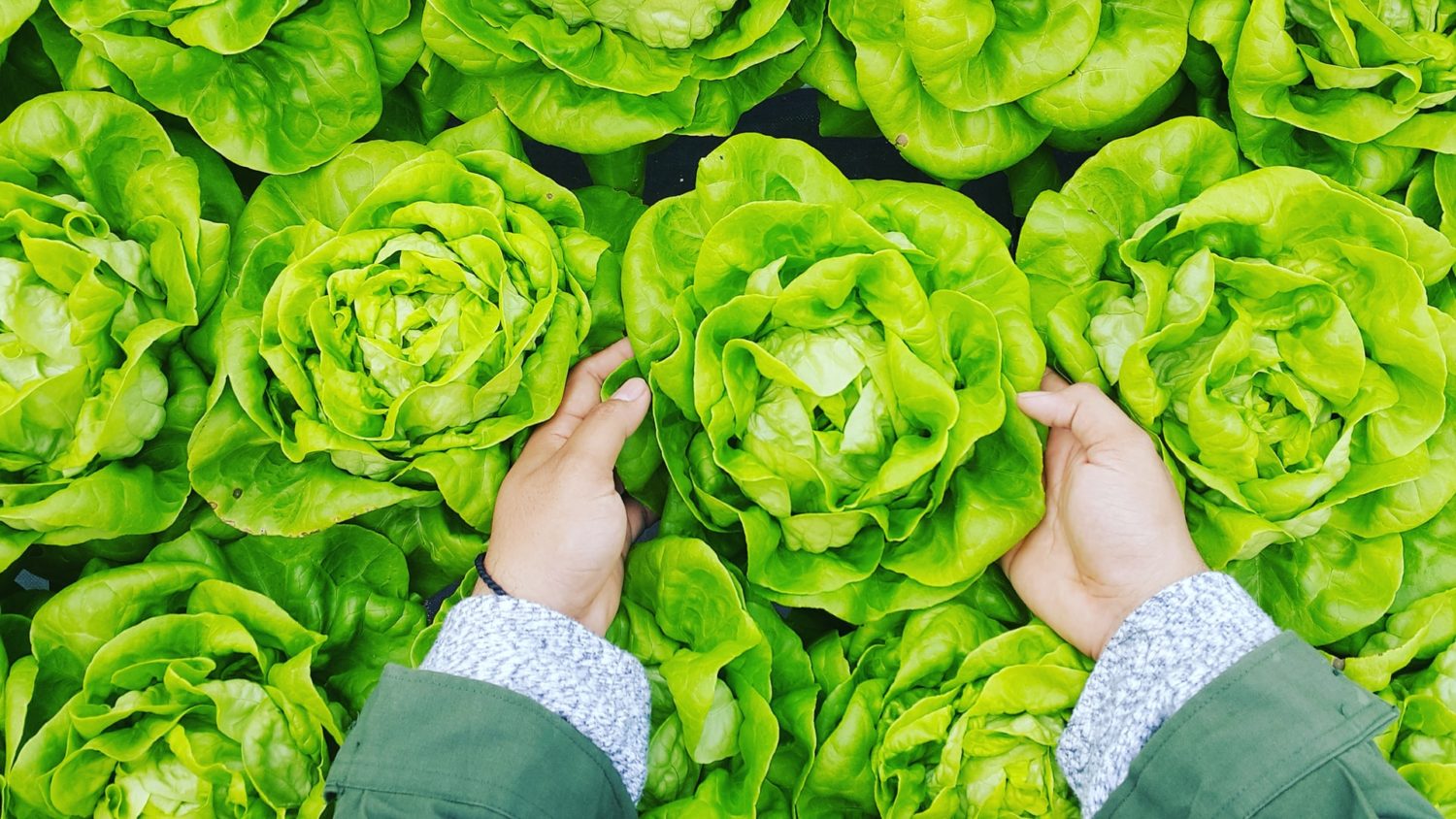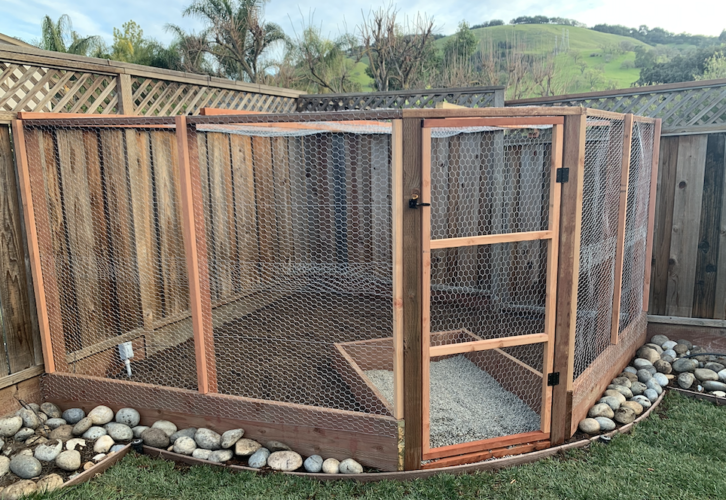
Gardening has become one of the most popular hobbies in recent years. People are deciding to plant their own vegetable garden for many reasons. For starters, the most important benefit of planting a garden in your home is a healthy lifestyle. Eating freshly picked and organic veggies every day has a significant effect on your well-being. Besides, gardening is one of the best eco-friendly activities out there. So, not only will you be improving your health, but you’ll also help our planet! Despite common misconceptions, planting a garden doesn’t have to cost you an arm and a leg. Therefore, we’re giving you some useful and awesome ideas for a DIY vegetable garden on a budget. Let’s scroll!
Building a vegetable garden on a budget can take some effort, but it’s not impossible. All you need are a few supplies and the right plan for your garden. Here are instructions for making one for yourself with an inexpensive fence and nets to make harvesting easy.
The first thing to do is decide where in your yard the vegetable garden will be and start building from there.
The picture below shows our budget garden. We used the fence in order to save money on wood.

Plant seeds instead of seedlings
Seeding is one of the most cost-effective garden techniques. Instead of paying up to $10 for a handful of seedlings, you may get a bag of 100 to 200 small seeds for $6 tops. You’ll definitely save a lot of money this way.
Yes, seeding requires a little more work at the beginning. Before the crop cycle, you’ll need to start incubating the seeds indoors at a comfortable temperature, wait for seedlings to sprout, and then move the tiny plants to the soil bed. However, don’t let this discourage you. It takes no more time to sow seeds directly in the garden bed than to plant seedlings.
If you’re just starting your DIY vegetable garden on a budget, we recommend you carefully think about the veggies you and your family would like to eat. The simplest veggies to grow from seed are beets, tomatoes, carrots, radishes, cucumbers, greens, pumpkin, green beans, etc.
Be frugal when buying seeds
Seed shopping is exciting, and if you’re observant, you may discover some amazing deals. However, going to a seed swap is arguably more interesting, and it will save you money as well. So, what is a seed swap? Simply put, it’s a party where everyone brings seeds from the previous year and trades them. Sounds great, right? That’s why another aspect to consider is to preserve your seeds in the fall. It will cost you nothing, and you’ll have fun at the swap!
DIY light setup for indoor seeds
If you listen to our advice and get seeds instead of seedlings for your veggie garden, you’ll have to make one indoors for the initial period. There are many creative in-home garden ideas, but one thing you need to make sure you have is grow lighting for your seeds. Since you’re making a DIY vegetable garden on a budget, we recommend you skip purchasing grow light setup and make one on your own instead. Here’s what you need:
- A cost-efficient shelf unit
- A few low-cost lights (you can use LED lightbulbs for brighter and more durable effect)
- A timer to control the lights
Where to grow your veggie garden
Are you surprised by the pricing of containers for growing vegetables? We are shocked! Well, almost as shocked as when we saw the most recent food prices. That’s why we did research to find out some DIY ways to make a working place for your veggie garden. So, here are some of the best free containers in which you can grow your vegetables at home:
- Buckets. You may acquire 5-gallon buckets for free from a local bakery or restaurant. These are food-safe and only require a deep clean. They even have handles on them, and the lid may be used as a shallow tray. If you want to make them pretty, you can paint them over with a nice, fun color.
- Grocery bags. We all have a bunch of recycled woven grocery bags at home we never use. So, why not put them to good use and turn them into cozy beds for your growing veggies.
- Wood pallet. This is a very popular and cost-effective solution for making raised beds for your DIY vegetable garden on a budget. The best part is you can easily get wood pallets for free.
These placements are ideal if you decide to relocate as well. The professional moving crew from spydermoving.com said it’s very easy to relocate your veggies if you have this type of garden. So, it’s wise to use these solutions from the very beginning.
Supports for plants
Some veggies require additional support. If you go to a local garden center, you’ll be unpleasantly surprised with the prices of this support equipment. Fortunately, you can always find some things in your home that will do the job just fine and help you stick to your budget at the same time. So, you might want to reuse the following:
- Use old towel bars or curtain rods to tie up your tomatoes.
- Use twist ties from food bags to prevent plants from flipping over.
- Yard, wire, or network cable also make up for a good plant tie.
- Strips from old pantyhose work as well – they are stretchy, so they will grow with your veggie.
Make your own soil
Purchasing bags of compost and all-natural fertilizers may quickly mount up, but when you consider what’s in such goods, it seems a waste to pay for them. Animal by-products and different types of organic waste make up most of it. If you don’t have your own poultry or other livestock to use as a compost supply, a friend or nearby farmer may be willing to let you clear out their barn.
Combine the manure with wood chippings, grass cuttings, leaves, or any other organic waste you can find. Then, pile it up and let it simmer for a few months to create rich compost. Additionally, save your eggshells and add them to the compost for extra calcium and phosphorus. You can also pick some seaweed if you live near the water for a dose of micronutrients. Just be sure you thoroughly rinse the seaweed in freshwater to remove the salt. This is one of the most eco-friendly ways to create a DIY vegetable garden on a budget.
Collect rainwater for your vegetable garden
Believe it or not, rainwater is much, much better for your vegetables than tap water. Firstly, it’s not treated with all sorts of chemicals that can be highly toxic to plants. And secondly, rainwater is usually warmer than tap water, especially if you keep it in a water barrel on sunny days. Water barrels may be placed in various areas of your home near where you need to water, saving you time and effort from lugging watering cans or hoses all around your yard. This is another green and economical solution for your veggie garden you simply must try.
Attract beneficial insects to your garden
Rather than purchasing helpful insects, you should make your garden more appealing to them. As a result, they’ll come and live among your crops, keeping those pesky pests away. All you have to do is grow the appropriate flowers and other attractants, offer fresh water and provide a home for mason bees to deposit their eggs in. And they’ll show up. Just make sure you don’t use any synthetic chemicals like pesticides or herbicides to avoid killing the helpful insects that are assisting you.
Honey bees are equally important as mason bees. They are both incredibly beneficial to the environment. Honey bees are known for their honey production, but they also pollinate a wide variety of plants and crops. Mason bees are solitary bees that build their nests in existing cavities, such as in trees or old masonry. They are excellent pollinators of fruits, vegetables, and other plants. Additionally, honey bees for honey production are managed by humans, while mason bees are generally left to their own devices.
Use old windows for a greenhouse
If you want to create a greenhouse, be aware that they are not affordable. The higher-quality kits are costly, and even if you build it yourself from scratch with all new components, windows, in particular, may be unreasonably pricey.
Instead, find some previously used windows. Ideally, look for windows with two panes. These are frequently changed because the seal between the two panes has deteriorated and moisture has formed inside the panes. Since condensation won’t make much of a difference, you can still use these windows in a greenhouse.
Conclusion
Many people give up on the idea of making a garden because of financial reasons. Fortunately, gardening doesn’t have to be expensive at all. That’s why we gave you a guide for creating a DIY vegetable garden on a budget. As you can see, you can do so much with so little money. You can use everything from waste to old pantyhose to buckets as a way to help your seeds grow into healthy and delicious veggies. Actually, the best part about this DIY garden is the creativity it requires. So, let your imagination run wild and educate yourself about the environment, and you’ll have the best veggie garden out there!



Hannah Chan
March 21, 2022Amazing post it was. Your home is so beautiful. Thanks a lot for sharing the amazing content!
David Te
March 21, 2022You are so kind. Thank you!